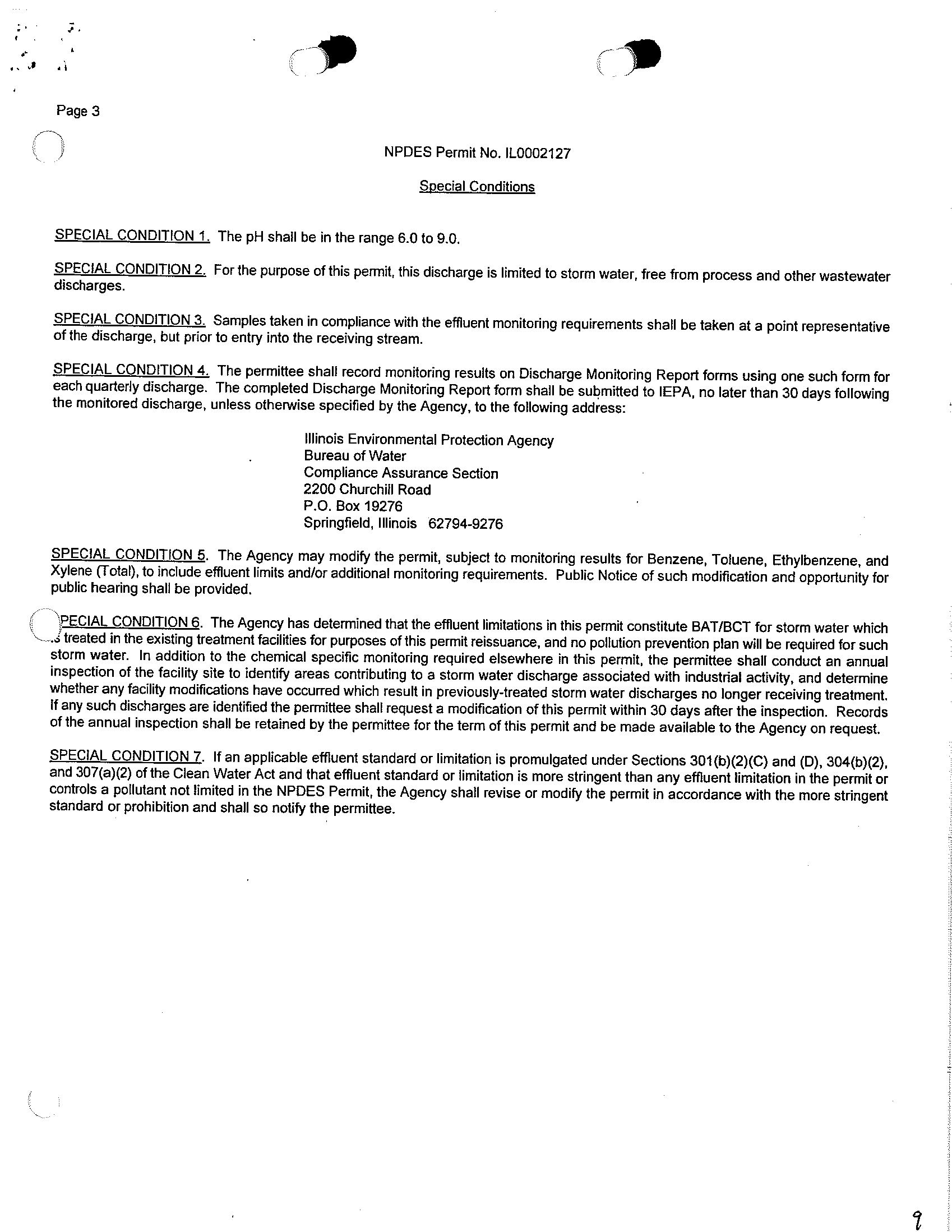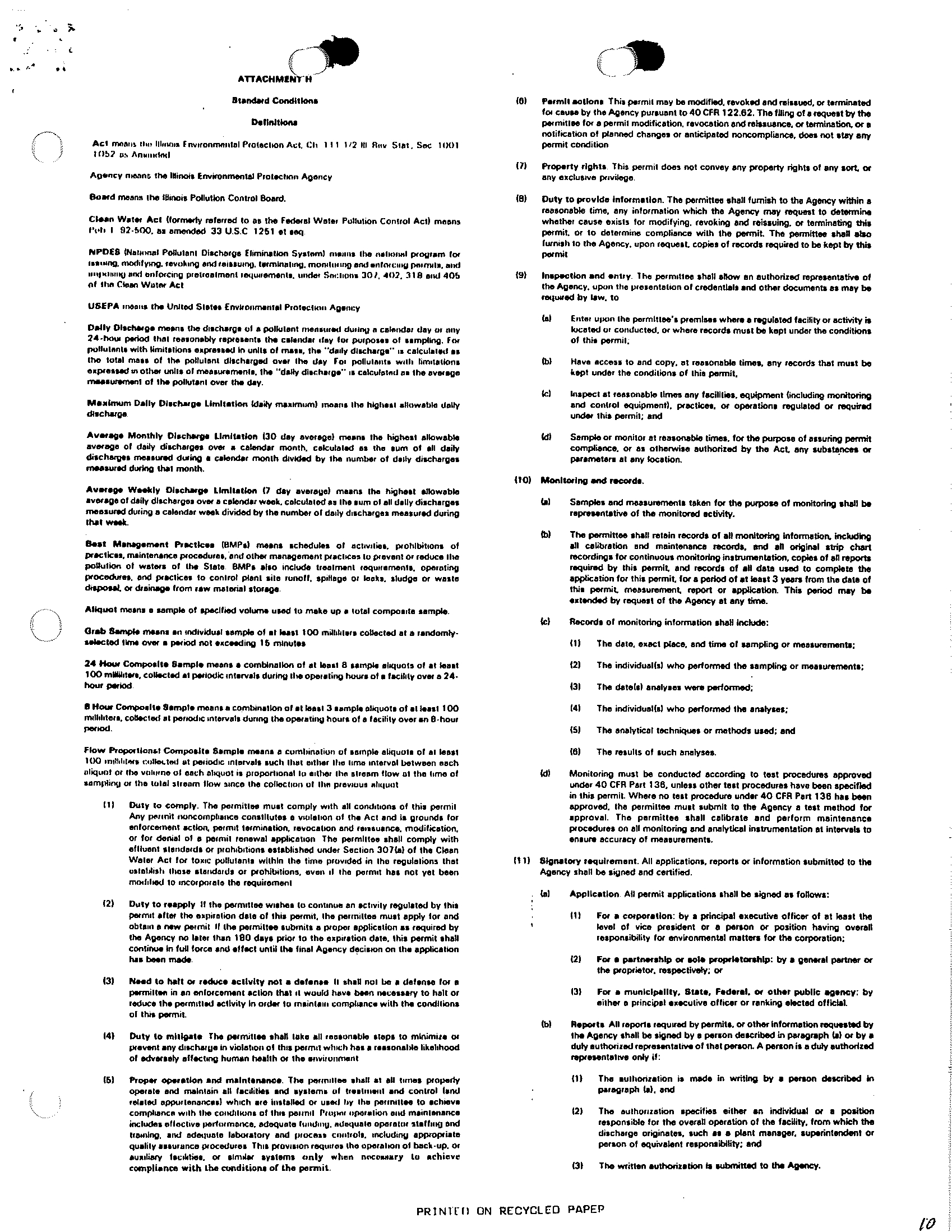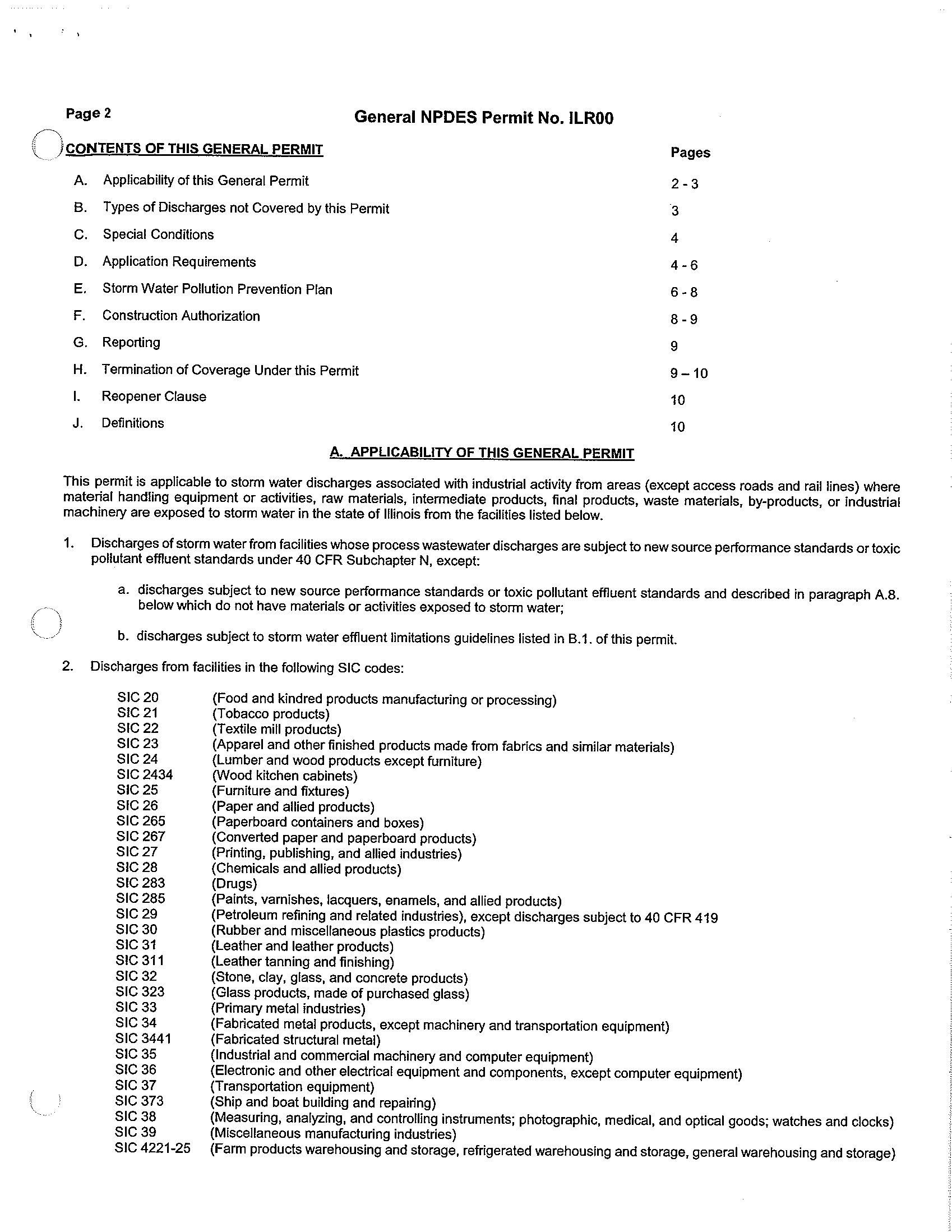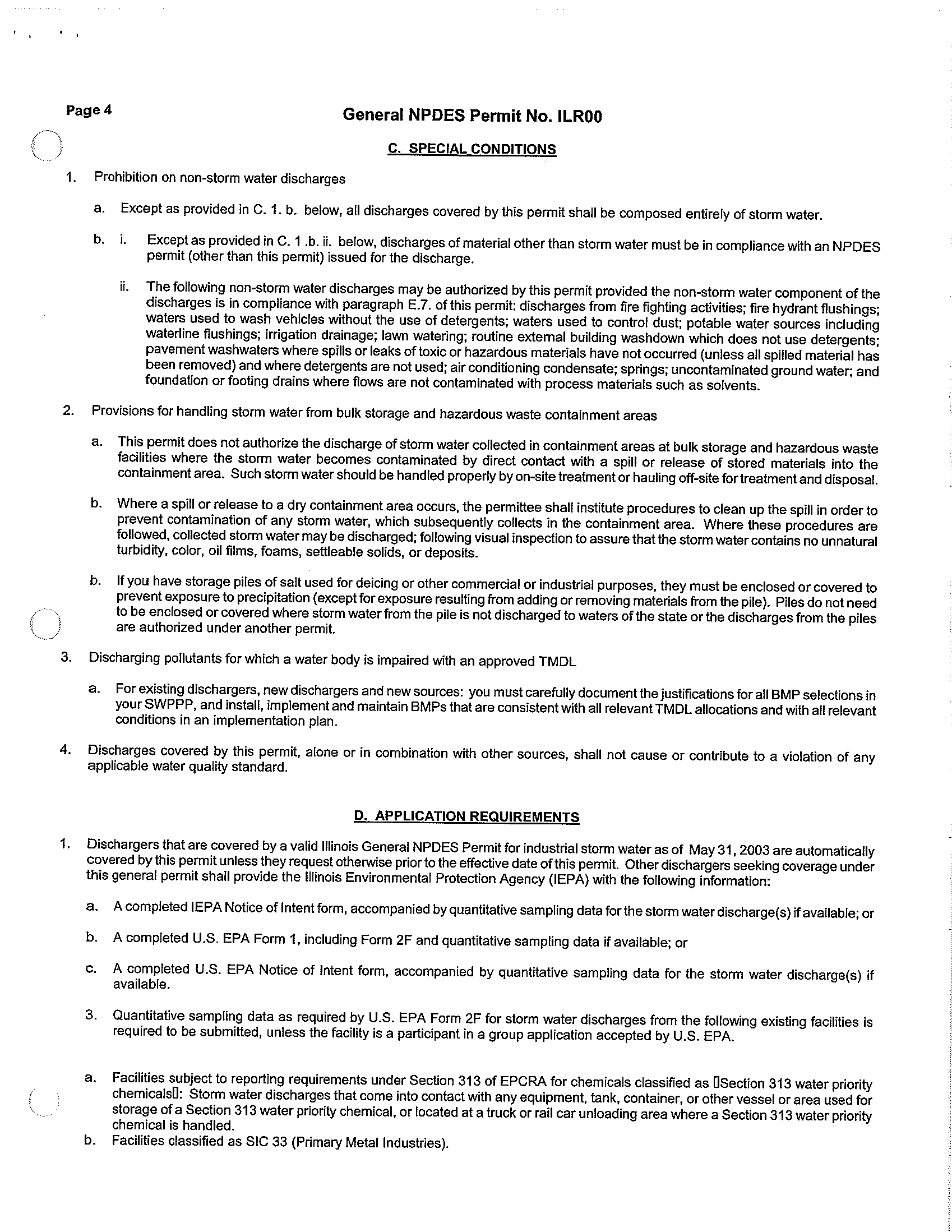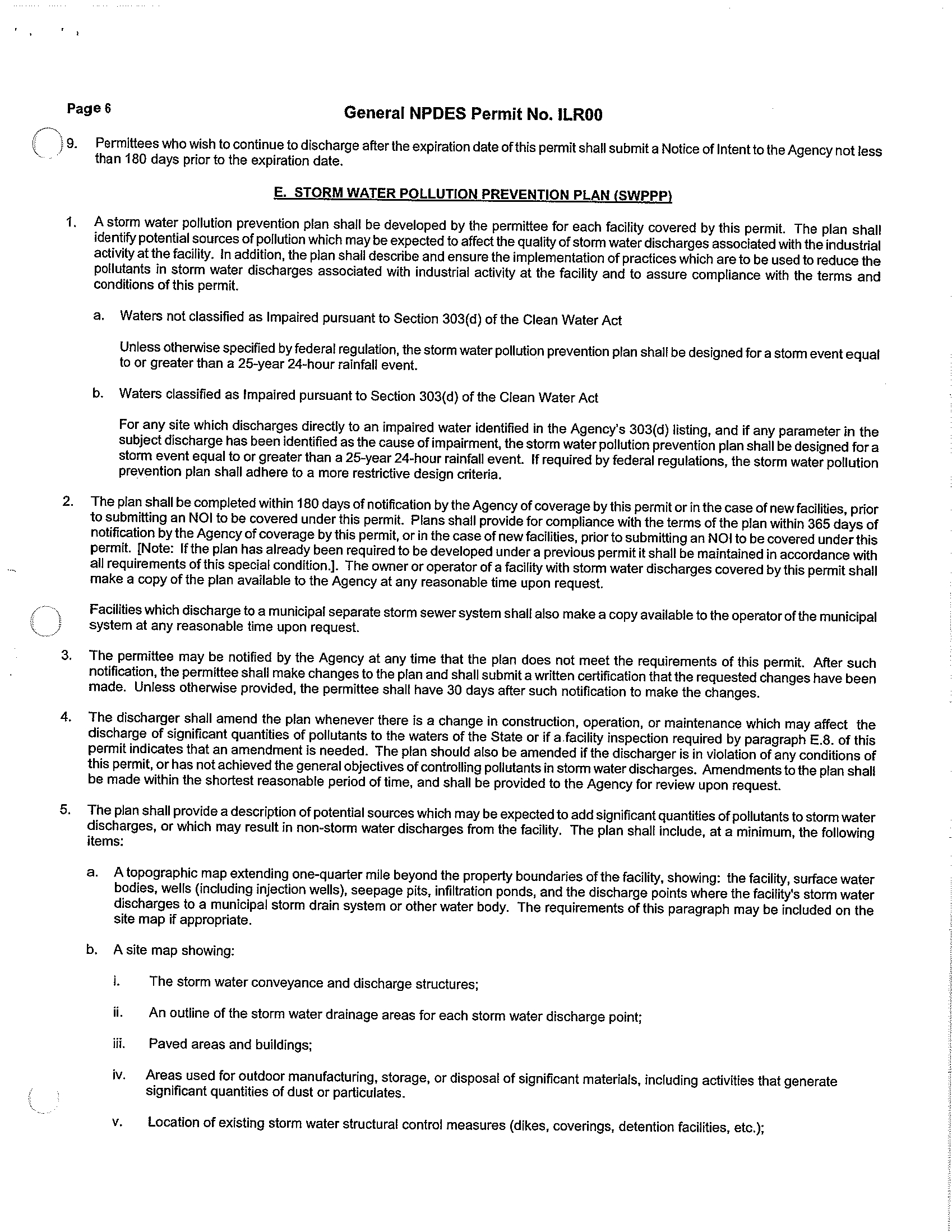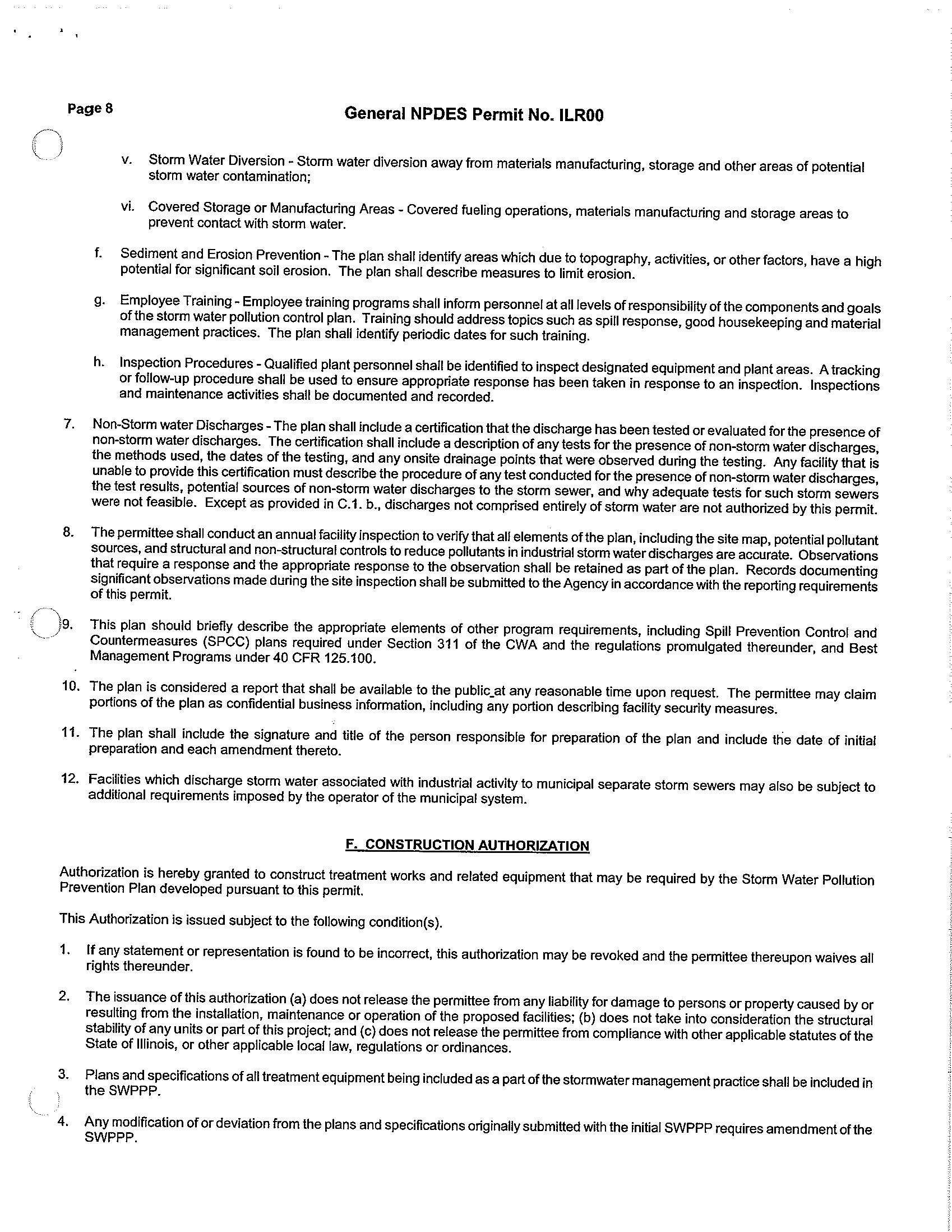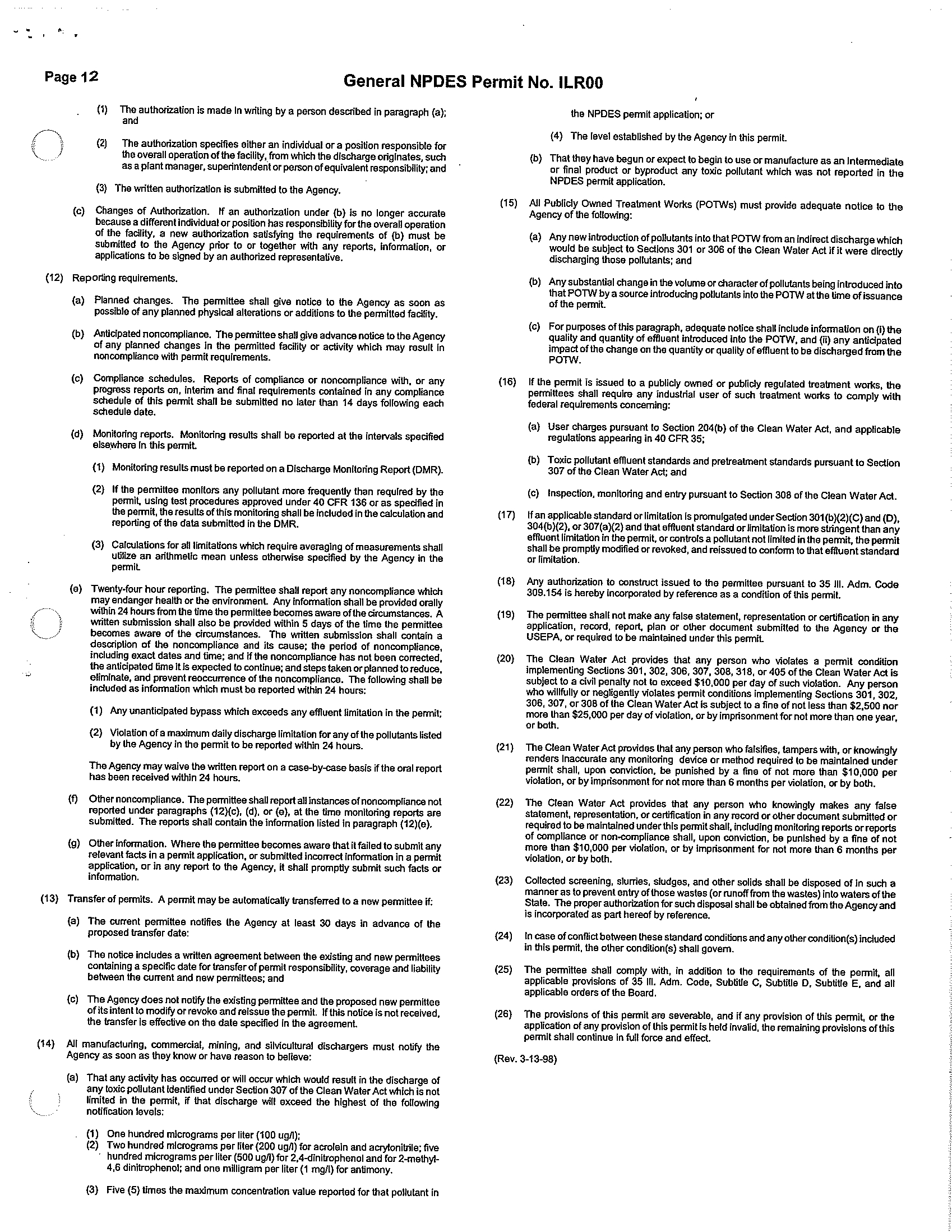BEFORE THE POLLUTION CONTROL BOARD
OF THE STATE OF ILLINOIS
PEOPLE OF THE STATE OF ILLINOIS
)
ex rel.
LISA MADIGAN, Attorney General
)
of the State of Illinois
)
) PCB 2008-007
Complainant,
)
)
vs.
)
VIA ELECTRONIC FILING
)
UNION PACIFIC RAILROAD COMPANY,
)
a Delaware corporation,
)
)
Respondent.
)
NOTICE OF FILING
John Therriault
Illinois Pollution Control Board
James R. Thompson Center
100 West Randolph Street, Suite 11-500
Chicago, IL 60601
Zemeheret Bereket-Ab
Assistant Attorney General
Environmental Bureau North
69 West Washington Street, Suite 1800
Chicago, IL 60602
Bradley P. Halloran
Hearing Officer
James R. Thompson Center
100 West Randolph Street, Suite 11-500
Chicago, IL 60601
W. Lee Hammond
Union Pacific Railroad Company
1400 Douglas Street, Stop 1080
Omaha, NE 68179
Please take notice that today, September 29, 2009, I have filed with the Office of the
Clerk of the Illinois Pollution Control Board by electronic filing Union Pacific Railroad
Company’s Motion for Reconsideration, along with Notice of Filing and Certificate of Service, a
copy of which is attached hereto and served upon you.
Respectfully submitted,
S
ONNENSCHEIN NATH & ROSENTHAL LLP
By: /s/ Thomas A. Andreoli
Attorneys for Respondent
Union Pacific Railroad Company
Thomas A. Andreoli
SONNENSCHEIN NATH & ROSENTHAL LLP
233 South Wacker Drive
Chicago, Illinois 60606
312.876.8000
tandreoli@sonnenschein.com
Electronic Filing - Received, Clerk's Office, Spetember 29, 2009
CERTIFICATE OF SERVICE
I, Thomas A. Andreoli, an attorney, hereby certify that I caused a copy of Union Pacific
Railroad Company’s Motion for Reconsideration, along with Notice of Filing and Certificate of
Service, to be served upon the service list on September 29, 2009, by regular mail.
/s/ Thomas A. Andreoli
Thomas A. Andreoli
BEFORE THE POLLUTION CONTROL BOARD
OF THE STATE OF ILLINOIS
PEOPLE OF THE STATE OF ILLINOIS
)
ex rel.
LISA MADIGAN, Attorney General
)
of the State of Illinois
)
) PCB 2008-007
Complainant,
)
)
vs.
)
VIA ELECTRONIC FILING
)
UNION PACIFIC RAILROAD COMPANY,
)
a Delaware corporation,
)
)
Respondent.
)
UNION PACIFIC RAILROAD COMPANY’S
MOTION FOR RECONSIDERATION
Union Pacific Railroad Company (“Union Pacific”) hereby respectfully moves the
Illinois Pollution Control Board (the “Board”), pursuant to 35 Ill. Admin. Code §§ 101.520 and
101.902, to reconsider its August 20, 2009 Order (“Order”) in this proceeding denying Union
Pacific’s Motion to Sever. The Board’s Order was in error and should be reversed for three
reasons:
First
, the Board based its ruling upon material factual errors, including the incorrect
finding that the two alleged releases addressed in the Complaint involved “the same NPDES
permit and the same facility.” Order at 7. This finding is directly contrary to the evidence.
Second
, the Board erred in relying upon improper hearsay evidence offered by the State in
opposition to the Motion to Sever. Order at 6-7.
Third
, the Board’s conclusion that no material
prejudice to Union Pacific would result from the Complaint’s consolidation of claims was in
error. In support of this Motion, Union Pacific states as follows:
Legal Standard
A motion for reconsideration serves the purpose of bringing to a court’s, or an
administrative agency’s, attention “newly discovered evidence, changes in the law, or errors in
-2-
the court’s previous application of existing law.”
See Itasca Bank and Trust Co. v. Thorleif
Larsen and Son, Inc
., 352 Ill. App. 3d 262, 265, 815 N.E.2d 1259, 1261 (2d Dist. 2004);
see also
Farmers Auto. Ins. Ass’n v. Universal Underwriters Ins. Co.
, 348 Ill. App. 3d 418, 422, 810
N.E.2d 562, 566 (1st Dist. 2004). In ruling on a motion for reconsideration, the Board will
consider factors including new evidence, or a change in the law, to conclude that the Board’s
decision was in error. 35 Ill. Admin. Code § 101.902.
Argument
A.
The Board Based Its Ruling Upon Material Factual Errors
The Board erroneously found that the two releases alleged in the Complaint involved
“violations of the
same
NPDES permit at the
same
facility.” Order at 7 (emphasis provided). In
fact, the evidence shows that the alleged releases in November 2005 and February 2006 took
place on different properties which were governed by separate NPDES permits until at least
February 14, 2006.
Specifically, the Order erred in its finding that the Global II intermodal facility and the
Proviso Yard were governed by “the same NPDES permit” at the time of the alleged November
2005 and February 2006 releases. Order at 6-7. They indisputably were not. Prior to
February 14, 2006, Union Pacific had a General NPDES Stormwater Permit (No. ILR003013)
for Global II. During this time period—which included the alleged November 2005 release—
Union Pacific had a different NPDES Permit (No. IL0002127) for the Proviso Yard. The
Proviso Yard permit (No. IL0002127) covered the discharge to Mud Creek.
In January 2006, Union Pacific requested that the Illinois Environmental Protection
Agency (the “IEPA”) cancel both permits and issue a new general NPDES permit for the two
properties as part of the an ongoing voluntary improvements program by the railroad to address
stormwater originating at the Proviso Yard, certain parts of Global II, and offsite sources west of
-3-
the two properties. On February 14, 2006, the IEPA canceled the General NPDES Stormwater
Permit (No. ILR003013) for Global II. On March 10, 2006, the IEPA declined to terminate
NPDES Permit (No. IL0002127) and stated that this permit would remain in effect for the
Proviso Yard and also apply to Global II. In that notice, the IEPA specifically identified Global
II and the Proviso Yard as separate “facilities.”
For the Board’s review, Union Pacific has attached to this verified Motion for
Reconsideration true and correct copies of the following, which were received by Union Pacific
from IEPA on or about the referenced dates:
.
NPDES Permit No. IL0002127 (issued Aug. 14, 1996) (Ex. A);
.
General NPDES Stormwater Permit No. ILR003013 (issued May 30, 2003)
(Ex. B);
.
NPDES Permit No. IL0002127 (reissued Jan. 24, 2006) (Ex. C);
.
the IEPA’s termination notice for General NPDES Stormwater Permit
No. ILR003013 (dated Feb. 14, 2006) (Ex. D); and
.
the IEPA’s notice declining to terminate NPDES Permit No. IL0002127 (dated
Mar. 10, 2006) (Ex. E).
The Order’s finding that Global II and the Proviso Yard are “the same facility” similarly
is contrary to the evidence. Order at 6-7. In its verified Motion to Sever, Union Pacific
established that the Global II and the Proviso Yard are not the same property. Mot. to Sever and
Mem. of Law at ¶¶ 1-9; Reply in Support of Mot. to Sever at 3-5. The verified statements
contained in Union Pacific’s filings on this point are unambiguous.
See
,
e.g
., Mem. of Law. at
¶ 1 (“Union Pacific owns and operates
two separate properties
that are subject to the
Complaint.”) (emphasis provided). The Order’s finding on this point was not only in error; it
was simply wrong. As Union Pacific noted, even the State treats the two properties as separate
facilities.
See
Reply in Support of Mot. to Sever at 4-5 (providing verified facts distinguishing
-4-
the two properties). In a further example, the State maintains separate generator ID numbers for
Global II (No. 0314710007) and the Proviso Yard (No. 0311865222).
The Order’s reliance on the State’s unverified and misleading assertions, including a
hearsay document (discussed at Argument, § B. below), to find that Global II and the Proviso
Yard are “the same facility” was patent error.
See
Order at 6-7. Union Pacific properly verified
its motion and provided verified facts distinguishing the two properties. Union Pacific was
entitled to rely upon the evidentiary protections of Section 101.504 of the Board’s General Rules,
83 Ill. Adm. Code § 504, against the State’s unsupported and incorrect assertions regarding these
separate properties.
B.
The Board Erred In Admitting And Relying Upon Unreliable Hearsay
The Board further erred when it relied on a hearsay document attached to the State’s
Response in Opposition to the Motion to Sever. Specifically, the Board determined to consider a
document in the form of a June 6, 2006 letter on Union Pacific letterhead to the IEPA (State
Resp. in Opp’n to Mot. to Sever, Ex. A), as a “business record,” and then relied upon this
document in denying the Motion to Sever. The State neither verified its Response in Opposition
to the Motion to Sever nor laid any foundation for the attached hearsay document.
In its Order, the Board asserted that it would “consider the letter in its deliberation as a
business record kept in the ordinary course of business by the agency.” Order at 6. This is an
incorrect application of the business records exception to the hearsay rule. The June 6, 2006
letter attached to the State’s responsive filing is
not
a business record of the IEPA. Moreover,
even it were (and it is not), the State has laid no foundation for its use to prove that Global II and
the Proviso Yard are “the same facility.” Resp. in Opp’n to Mot to Sever at 3.
The admission of business records requires a proper foundation. The record must “have
been made in the regular course of business, provided it was the regular course of business to
-5-
make the memorandum or record at the time of the act, transaction, occurrence, or event, or
within a reasonable time thereafter.” 35 Ill. Adm. Code § 101.626(e). The State has established
no foundation for the use of the June 6, 2009 document for any purpose. Moreover, it is unlikely
the State ever could meet the foundational requirements for the truth of any matters asserted in
the letter as an IEPA business record. The Illinois courts typically reject attempts to use the
business records exception to admit hearsay documents not created by their proponent because
the proponent usually cannot establish a proper foundation.
Apa v. Nat’l Bank of Commerce
, 374
Ill. App. 3d 1082, 1087, 872 N.E.2d 490, 494 (1st Dist. 2007) (collecting cases).
The Order asserts that Union Pacific “does not specify any manner in which the proffered
document is deficient or untrustworthy.” Order at 6. But that allowance for the State’s improper
use of hearsay, and the Order’s improper reliance on it, misses the point. The harm in this
“evidence” is manifest in the Order’s misunderstanding of the June 26, 2006 letter. Contrary to
the State’s self-serving and inaccurate characterization, the letter does not stand for the
proposition that Global II and the Proviso Yard are “located on the same parcel of land, just in
different locations on the parcel.”
See
Resp. in Opp’n to Mot. to Sever at 2. The Board’s use of
and reliance on the hearsay document to establish this “fact” is error.
C.
The Board’s Conclusion That No Material Prejudice Would Result From The
State’s Consolidation of Claims Was In Error
Finally, the Order concludes that “the same theory of liability applies to both of the
People’s claims.” Order at 6. The Order adds that “the Board is well able to avoid carrying ‘any
impermissible negative influence’ (sic) over from its determinations concerning one count to
another.” Order at 7. This conclusion does not address the grave error and material prejudice to
Union Pacific inherent in the State’s determination to consolidate claims arising from two
-6-
separate and unrelated releases into a single action in order to obtain an impermissible
inference
of liability against Union Pacific.
The pertinent case law relating to each of the State’s claims was first identified in Union
Pacific’s Motion to Sever. Causation is an essential element of the State’s claims. As the State
concedes, the Act is
not
a strict liability statute.
People v. A.J. Davinroy Contractors
, 249 Ill.
App. 3d 788, 793, 618 N.E.2d 1282, 1286 (5th Dist. 1993);
Perkinson v. Ill. Pollution Control
Bd.
, 187 Ill. App. 3d 689, 693, 543 N.E.2d 901, 903 (3d Dist. 1989);
Phillips Petroleum Co. v.
Ill. Envtl. Prot. Agency
, 72 Ill. App. 3d 217, 220, 390 N.E.2d 620, 623 (2d Dist. 1979). Liability
may not be imposed regardless of fault.
See, e.g., PMC, Inc. v. Sherwin-Williams Co
., 1993 WL
259442, at *2 (N.D. Ill. July 7, 1993) (noting that the Act is “a fault-based statute”).
To analyze causation, the Illinois courts have developed a two-part test, which is
consistent with the Act’s purpose to ensure that polluters pay for pollution for which they
actually bear responsibility. As formulated by the Illinois Appellate Court:
[T]he owner [or operator] of the source of the pollution causes or
allows the pollution within the meaning of the statute and is
responsible for that pollution
unless the facts establish the owner
[or operator] either lacked the capability to control the source …
or had undertaken extensive precautions to prevent vandalism or
other intervening causes
….
Perkinson
, 187 Ill. App. 3d at 694-95, 543 N.E.2d at 904 (emphasis provided). Each of the
seminal cases (
Phillips
,
Perkinson
, and
Davinroy
) contains a detailed factual analysis of whether
the defendant acted or failed to act in such a manner under the specific circumstances that a
finding of liability for the alleged pollution was justified.
The State must prove each of the violations alleged in the Complaint, and Union Pacific
should have the opportunity to defend each alleged violation on its own merits. But that is not
what the State intends. As stated bluntly in its Response in Opposition to the Motion to Sever,
-7-
the State in this proceeding is asking the Board to return a finding of liability as to both the
alleged November 2005 and February 2006 releases and to impose civil penalties against Union
Pacific based upon a “pattern of violations.” Specifically, the State asserts: “Absolutely no
harm would come to [Union Pacific] by trying this case in a single matter. If any prejudice
would come, it would be to the State if the Board allowed the matters to be severed and
the
Board would be precluded from considering the pattern of violations at this facility
….” Resp.
in Opp’n to Mot. to Sever at 3 (emphasis provided).
The Order concludes that the State’s approach poses no prejudice to Union Pacific,
because “both allegations stem from the discharge of contaminants into Mud Creek via [Union
Pacific’s] oil/water separator, which is governed by the same NPDES permit.” Order at 6. As
shown above, this statement is contrary to the evidence. Global II and the Proviso Yard were
not
under the same NPDES permit at the time of the alleged November 2005 release. Moreover, the
“rail yard” was not the “source of the pollution” in both instances, despite the State’s inaccurate
and unsupported assertions to the contrary.
See
Resp. in Opp’n to Mot. to Sever at 5. The Order
errs by denying severance based upon the supposed factual “connection” between the State’s
claims.
See
Order at 7.
The Order further errs by allowing the State to proceed based upon an “other bad acts”
theory of the case. The Order states that “the Board is well able to avoid carrying ‘any
impermissible negative influence’ (sic) over from its determinations concerning one count or
another.” Order at 7. But this statement misapprehends the unavoidable prejudice in the State’s
approach. The State has
not
filed separate counts as to the alleged November 2005 and February
2006 releases. Instead, the Complaint consolidates the State’s claims arising from these causally
unrelated alleges into four combined counts. This approach is impermissible because it denies
-8-
Union Pacific the chance to obtain a fair and objective finding on liability as to each of the
alleged releases and renders an objective determination on damages impossible. Severance is not
only the appropriate procedural remedy, it is essential.
Conclusion
WHEREFORE, for these reasons, Union Pacific Railroad Company respectfully requests
that the Illinois Pollution Control Board grant its Motion for Reconsideration.
Dated: September 29, 2009
Respectfully submitted,
SONNENSCHEIN NATH & ROSENTHAL LLP
By: /s/ Thomas A. Andreoli
Attorney for Respondent
Union Pacific Railroad Company
Thomas A. Andreoli
Sonnenschein Nath & Rosenthal LLP
233 South Wacker Drive
Chicago, Illinois 60606
312.876.8000
tandreoli@sonnenschein.com
Exhibit A
Exhibit A
Electronic Filing - Received, Clerk's Office, Spetember 29, 2009
Exhibit A
Electronic Filing - Received, Clerk's Office, Spetember 29, 2009
Exhibit A
Electronic Filing - Received, Clerk's Office, Spetember 29, 2009
Electronic Filing - Received, Clerk's Office, Spetember 29, 2009
Exhibit A
Exhibit B
Electronic Filing - Received, Clerk's Office, Spetember 29, 2009
Exhibit B
Electronic Filing - Received, Clerk's Office, Spetember 29, 2009
Exhibit B
Electronic Filing - Received, Clerk's Office, Spetember 29, 2009
Exhibit B
Electronic Filing - Received, Clerk's Office, Spetember 29, 2009
Exhibit B
Electronic Filing - Received, Clerk's Office, Spetember 29, 2009
Exhibit B
Electronic Filing - Received, Clerk's Office, Spetember 29, 2009
Exhibit B
Electronic Filing - Received, Clerk's Office, Spetember 29, 2009
Exhibit C
Electronic Filing - Received, Clerk's Office, Spetember 29, 2009
Exhibit C
Electronic Filing - Received, Clerk's Office, Spetember 29, 2009
Exhibit C
Electronic Filing - Received, Clerk's Office, Spetember 29, 2009
Exhibit C
Electronic Filing - Received, Clerk's Office, Spetember 29, 2009
Exhibit C
Electronic Filing - Received, Clerk's Office, Spetember 29, 2009
Exhibit D
Electronic Filing - Received, Clerk's Office, Spetember 29, 2009
Exhibit E
Electronic Filing - Received, Clerk's Office, Spetember 29, 2009



